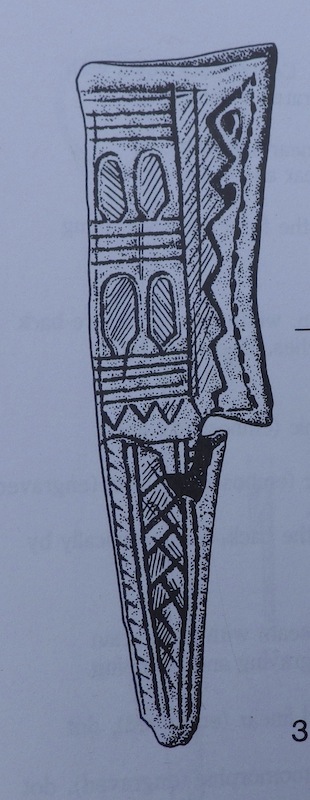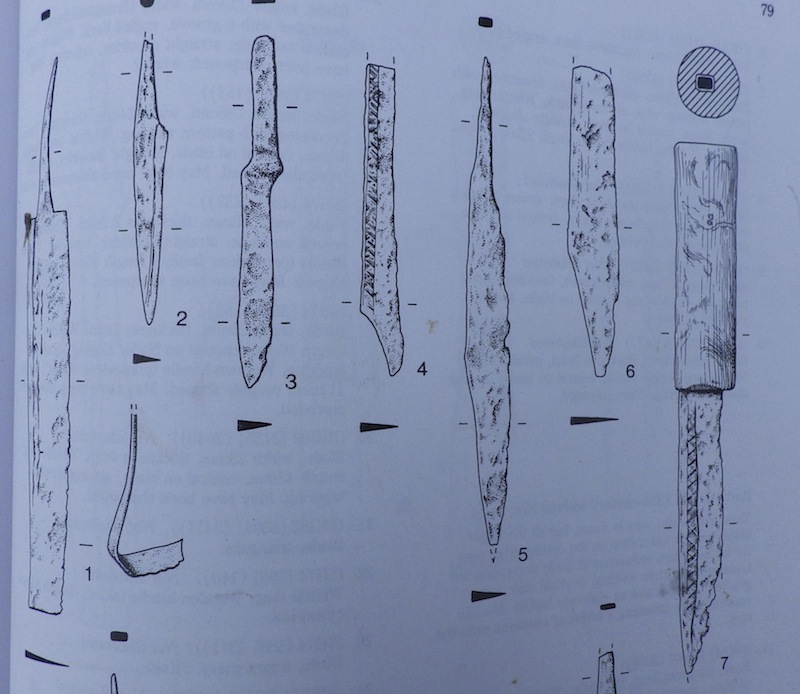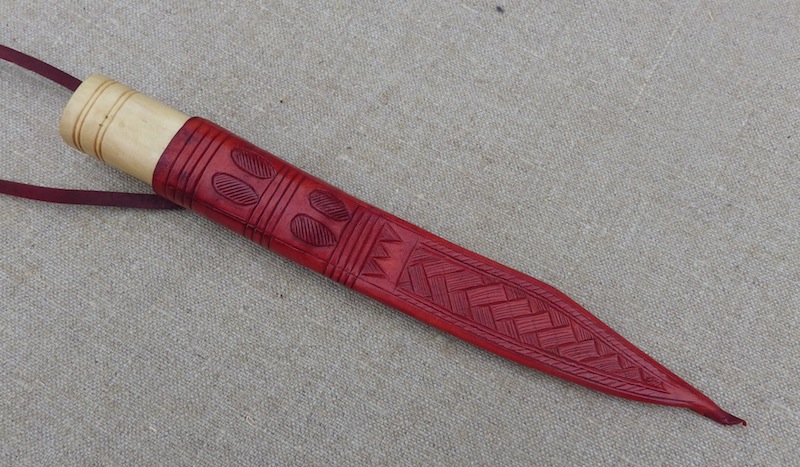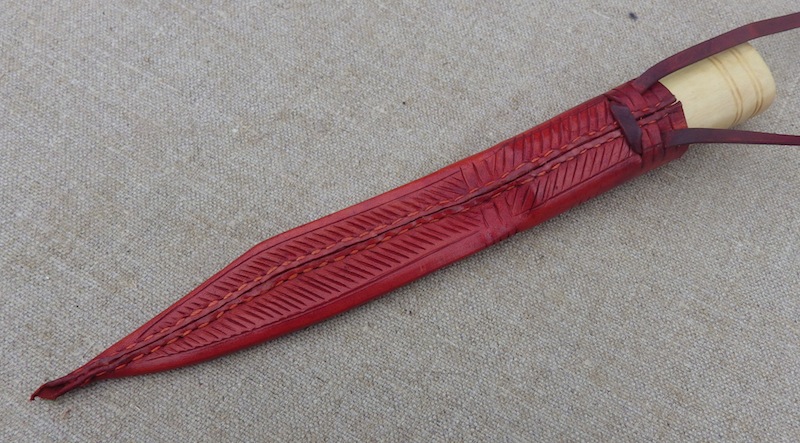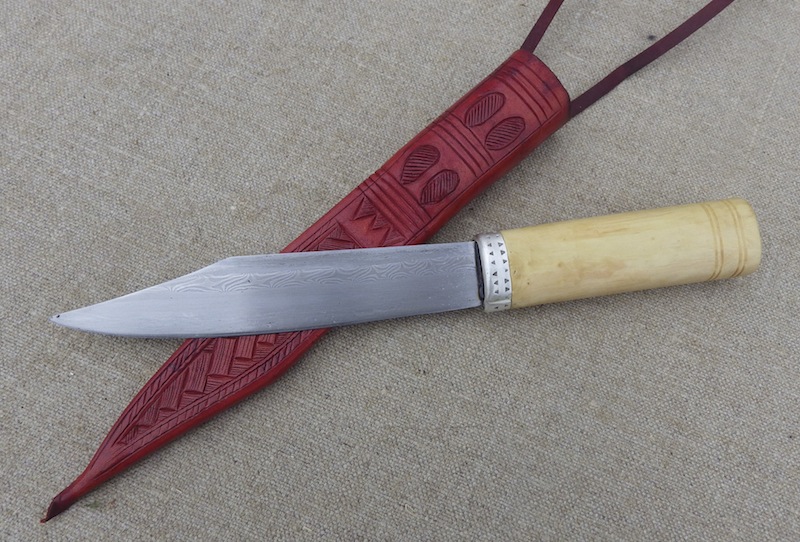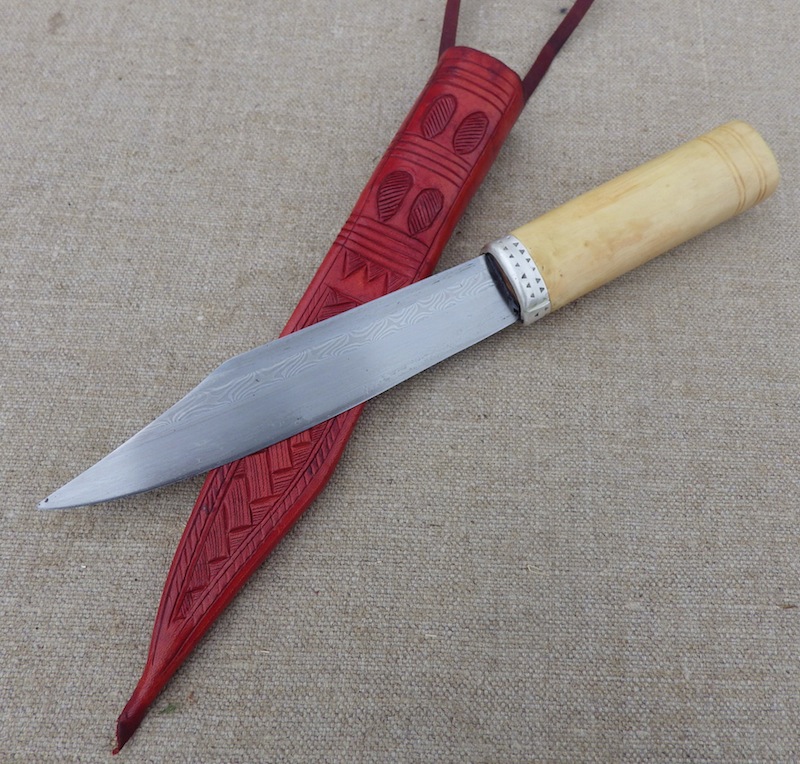The blade is very much like a broken back seax, but three of the 7 blades shown in the book are of this form this seemed like a good solution.
The only scabbard in the book shown as 12thC is in fact corrected in the addenda to 13thC. The decoration is very plausible for 12thC so we decided to make a scabbard without the tab and use this.
Blade is by Owen Bush and has a twisted core with a wrought iron back and piled shear steel edge.
Throughout the overall aim was historical authenticity and although this knife had to be full of conjecture I think we got there.
I hope you like the result.
Tod
